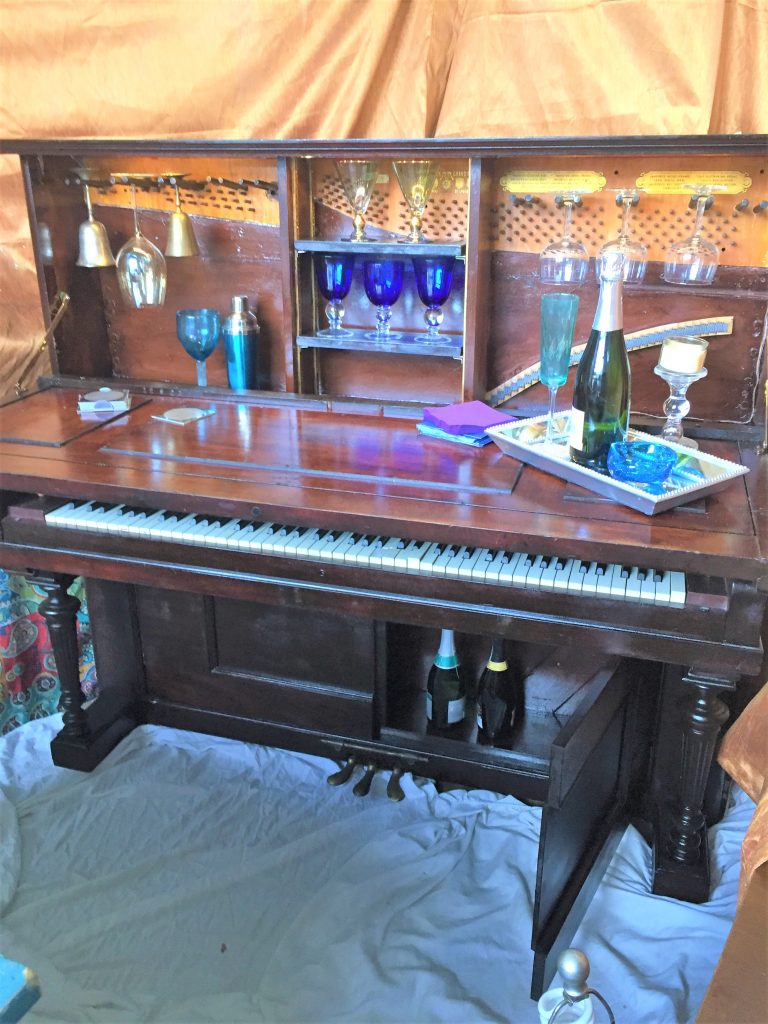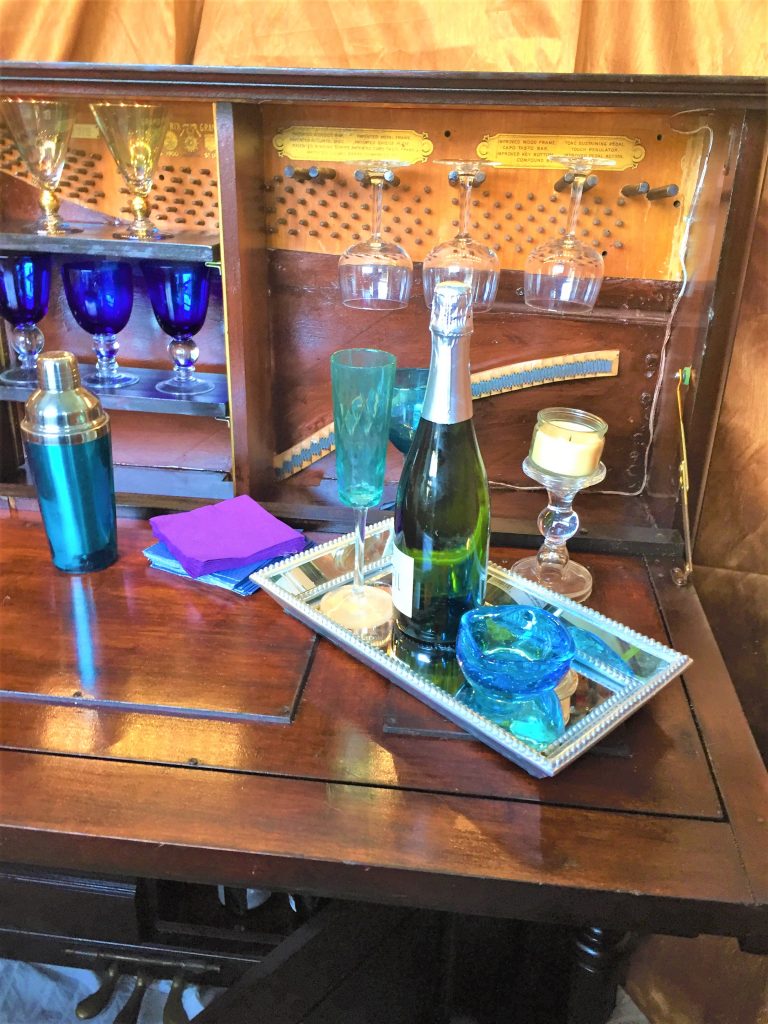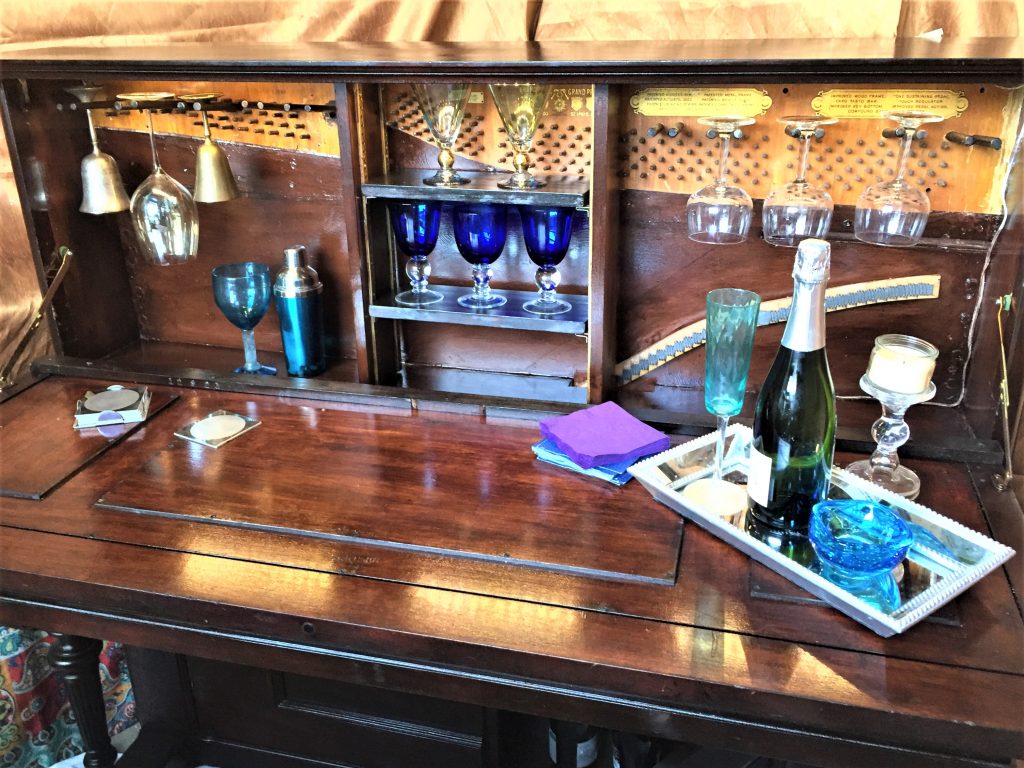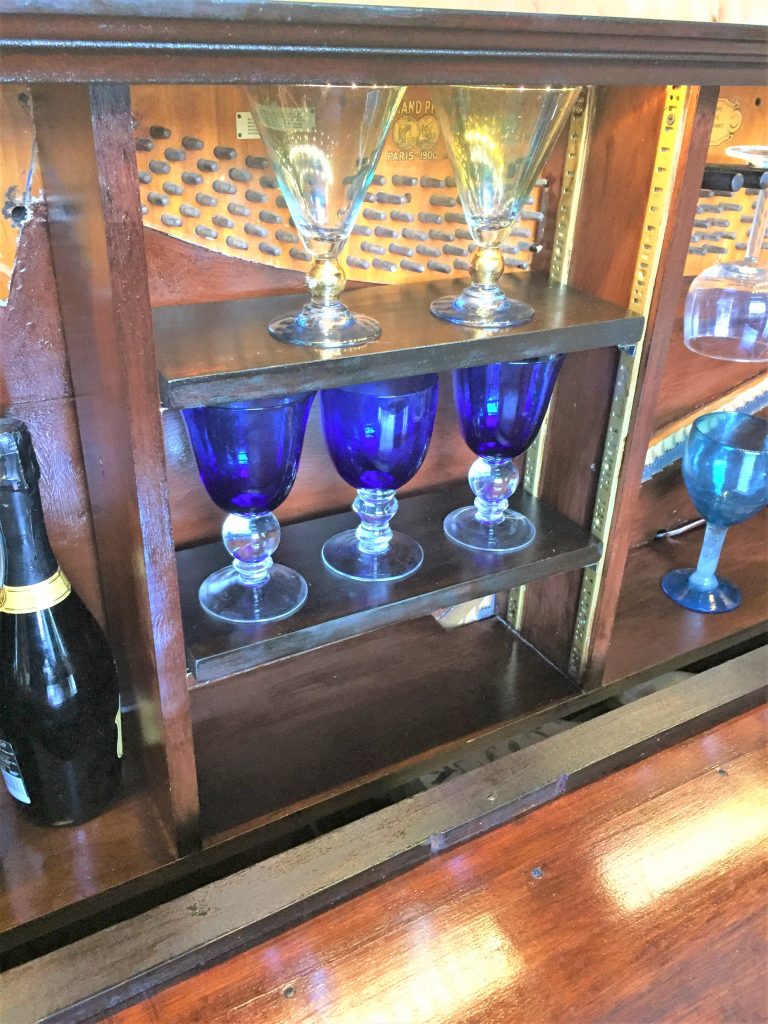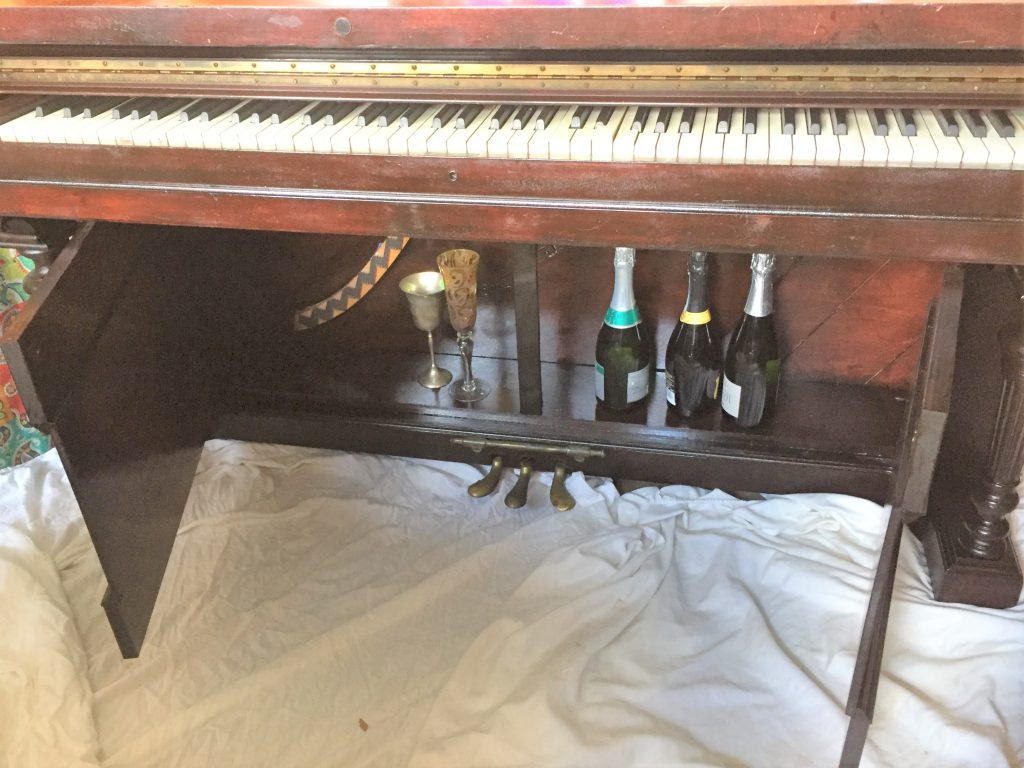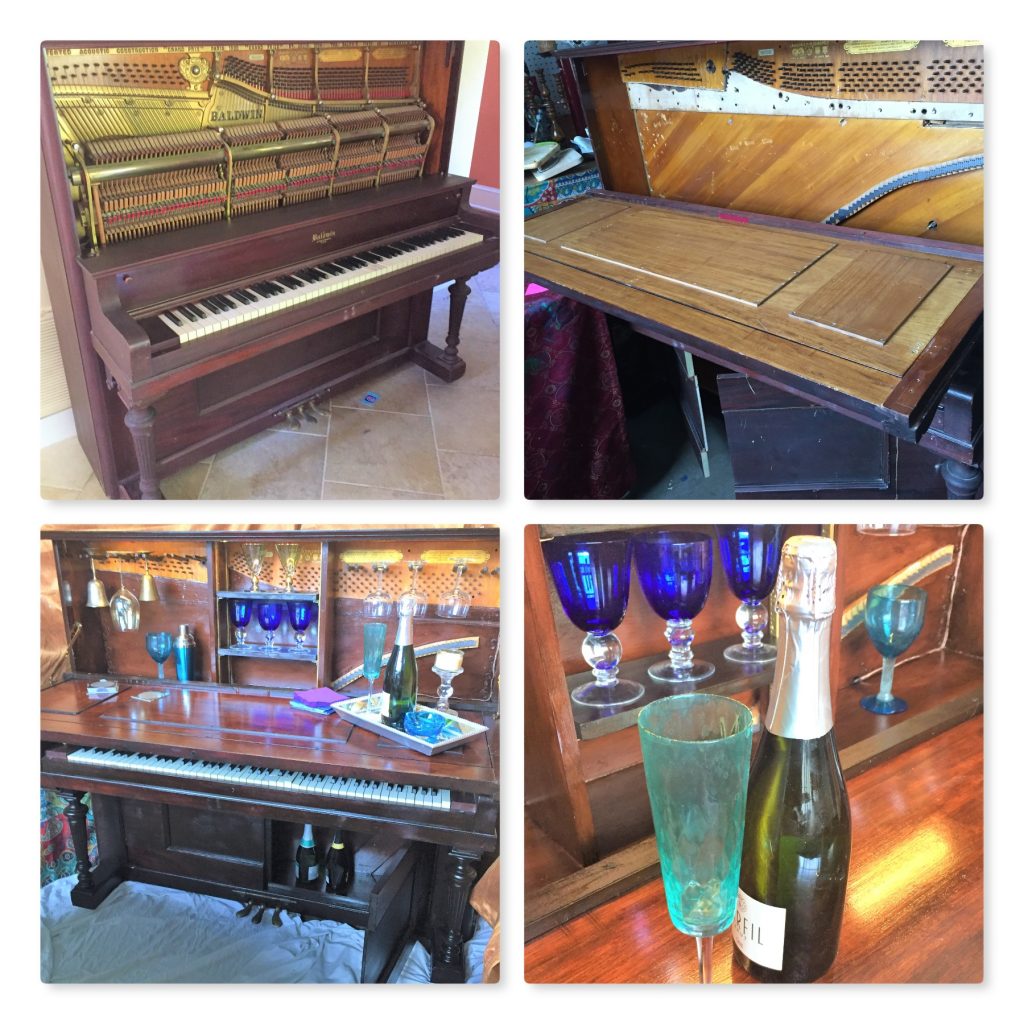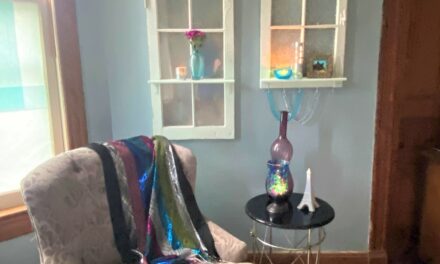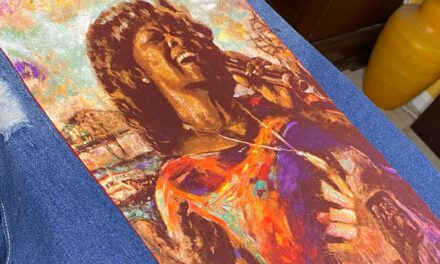Since Finding Your Good followers/readers are into interesting and creative things, I thought you would be inspired by my recently completed DIY project that will make you want to sing loud and proud—at least that is how I feel!
A worn and weathered upright piano was repurposed as a hip and happening bar. Guests will want to belly up to it because of its unique charm and fabulous function!
A client trusted me to turn her beloved late grandmother’s old, out of tune and out of date piano into a one of a kind bar, destined to be the centerpiece of celebrations for generations to come!
What I love about this project is that it helps you to see what an object could be when you think about it in a different way. Rather than gathering dust in the corner or becoming a cumbersome eye-sore that you feel you have to keep, it now serves an inviting and engaging new purpose. Nurna, as she was called, must be happy knowing her musical instrument is a treasured heirloom that will take centerstage for family gatherings.

Here are several of the many steps in the process to get this piano in tune for its debut performance as a bar.

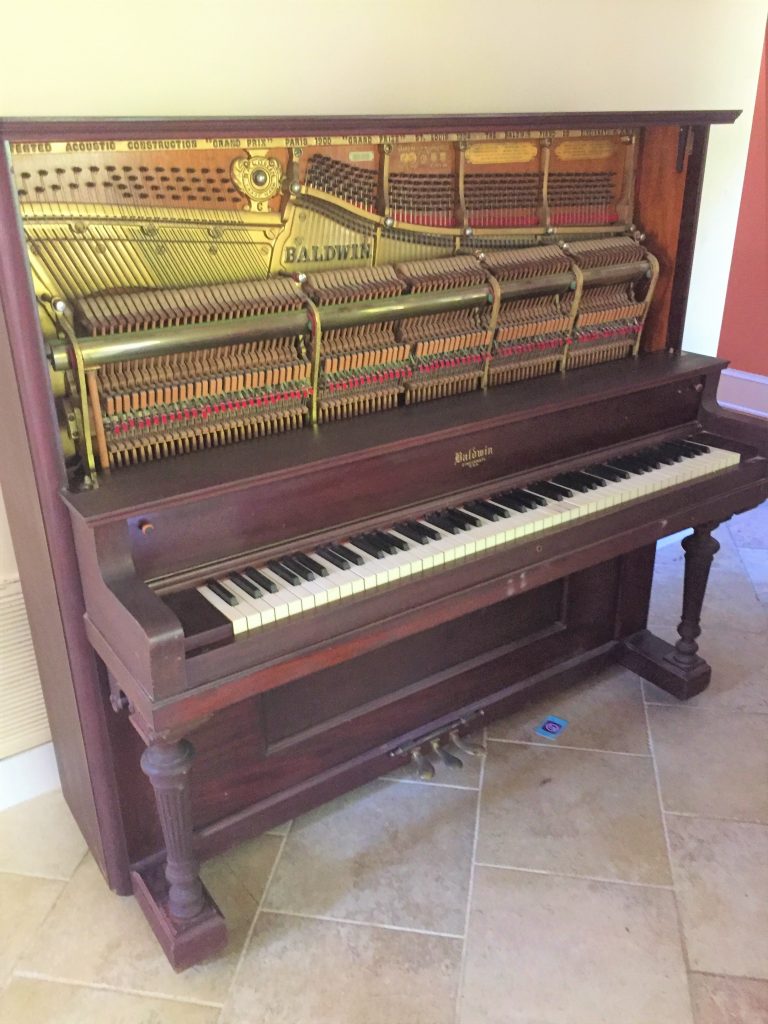
Remove its inside
This century old piano could barley be played since its beautiful sounds and notes were put out to pasture long ago. However, the carved cabinet, curved legs and timeless details, along with the deep sentimental value, were all excellent reasons for repurposing this piece.
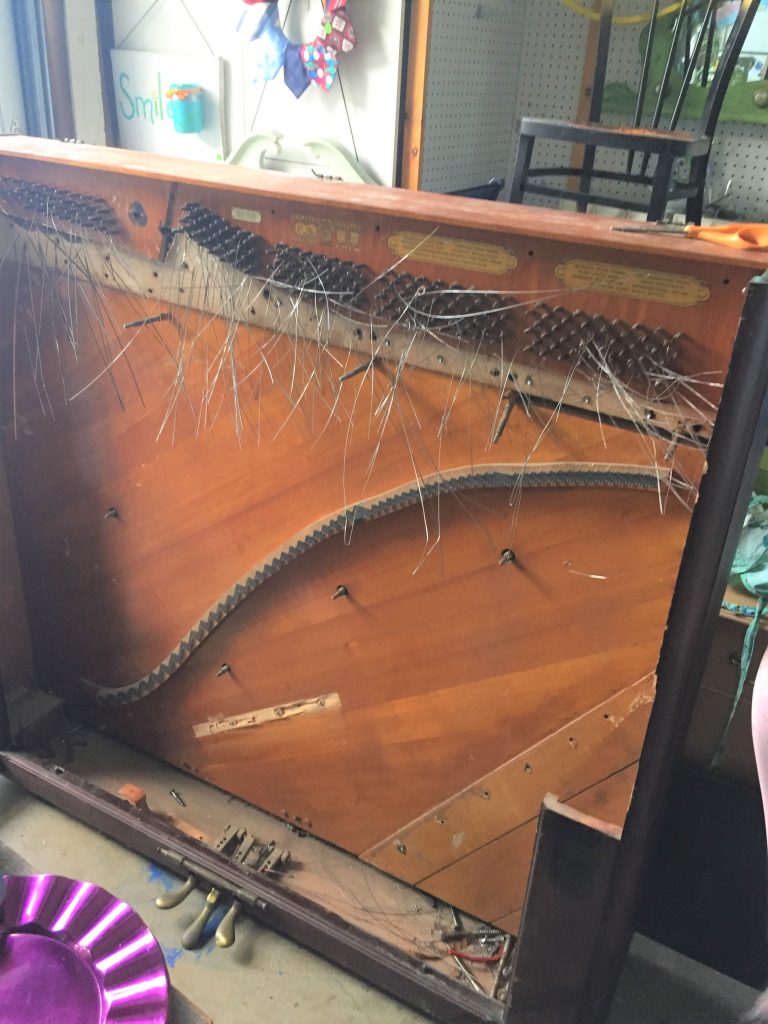
Removing the innards with its wires, metal frames, oversized screws and other parts were the first step in transforming it. When that was done, remaining was a wooden piece ripe for a rebirth. And some of the original elements were must keeps like the ivory keyboard and internal labels with dates and details that are part of its history.

Also, the foot pedals which now no longer served a function, had to be saved and included since many family members’ feet, over the decades, would have touched them to help play music.
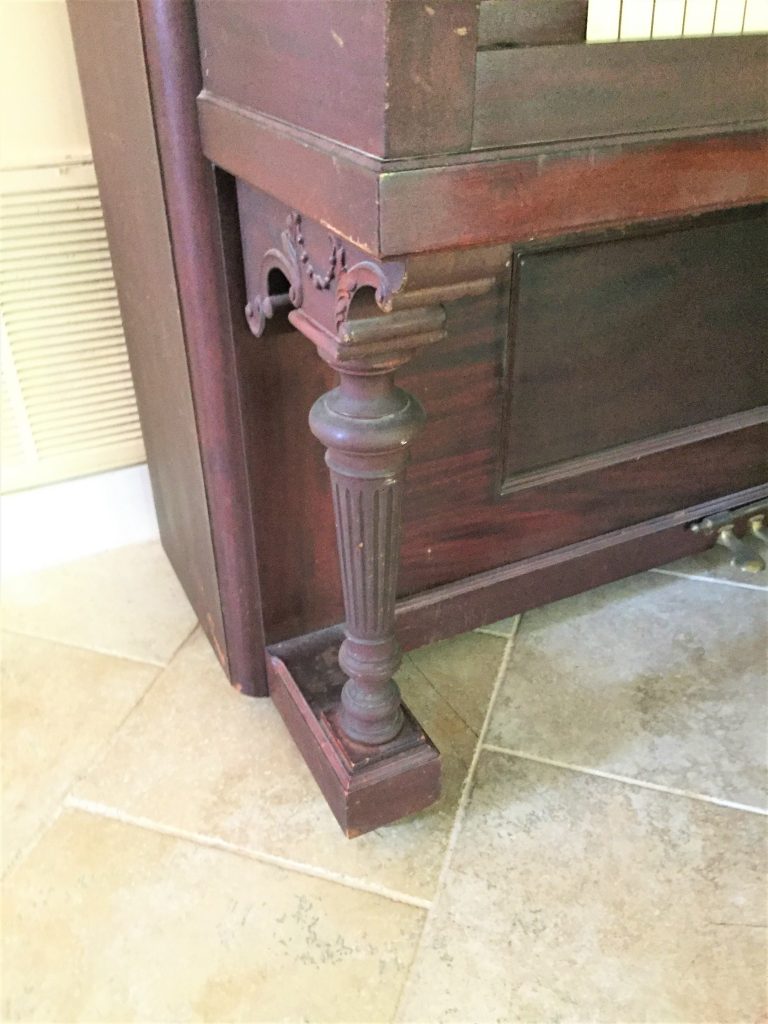
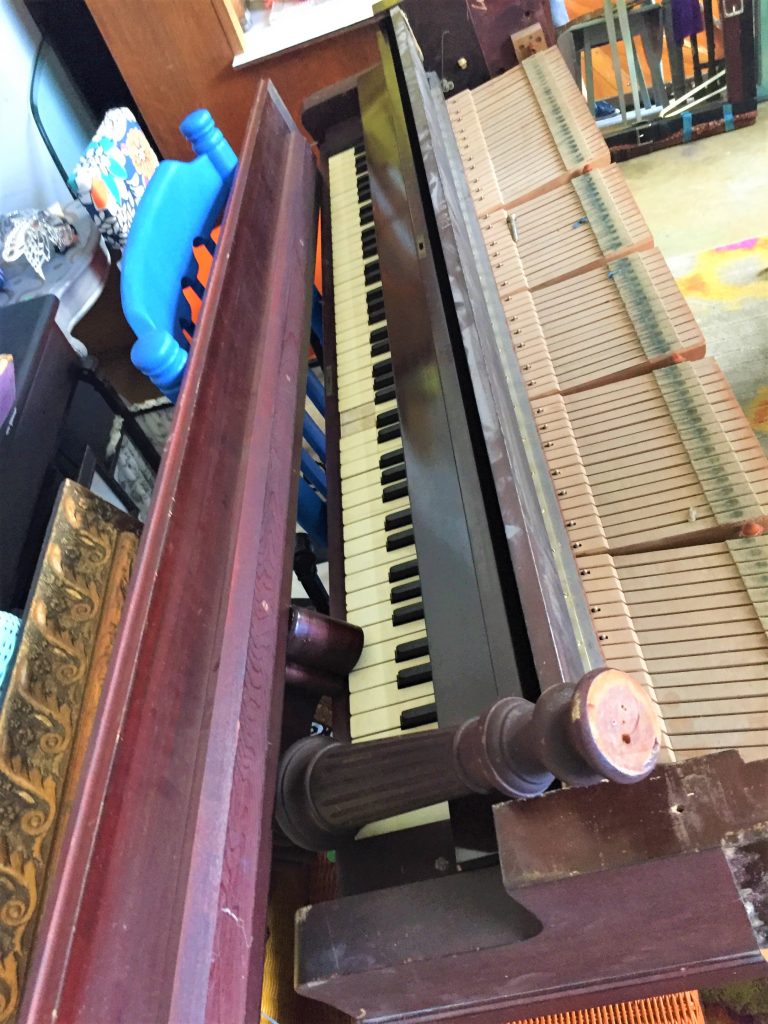
Map out its new purpose
The preliminary step in any journey is to map out your course before you take the first step. Take measurements, sketch things out, create a plan and look online for other related projects for inspiration and ideas. I knew the look and feel I wanted for the finished piece and my client had many good ideas that I wanted to make happen for her. By taking the time upfront and by being intentional, you will ensure your vision has a good foundation for success.. Of course, you may need to course correct as you go.
Top part: bar surface & glass display
Given its height and rectangular shape, the most clearcut role for the old front panel was to serve as the bar top. Hinges were added along the bottom and special brackets were secured along the sides so that this delicately carved panel could be opened so its backside, now the bar, could be used when serving guests. This panel could be closed so the piano looks like it did 100 years ago when the family first purchased it.
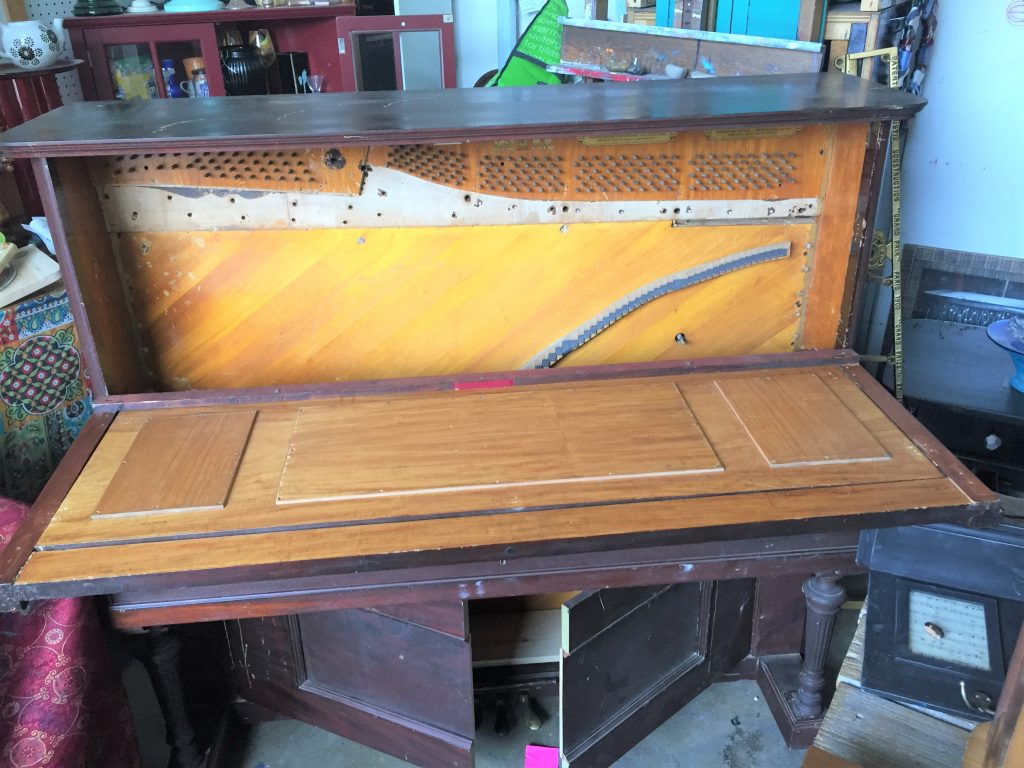
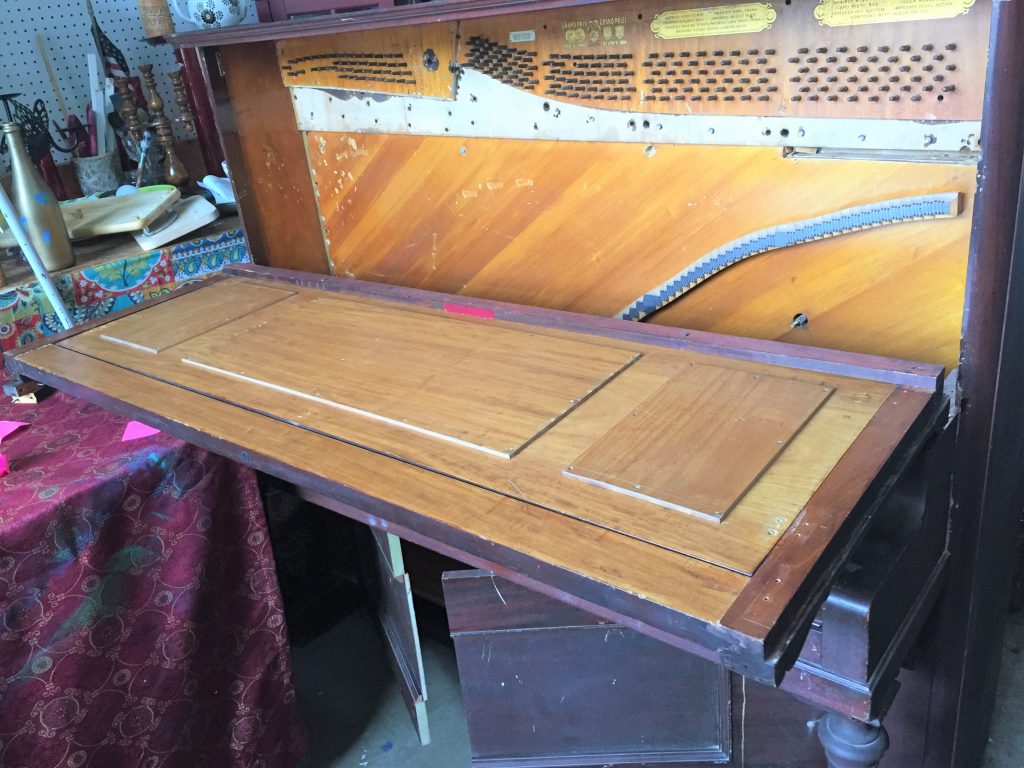
With the internal part now empty and wide open, shelves and dividers were added as a place to position bottles or glasses. When the top is lowered into its bar position, you are able to see along the back side some of the original manufacturer’s labeling with interesting information as well as metal pins, which would have anchored the piano wires.

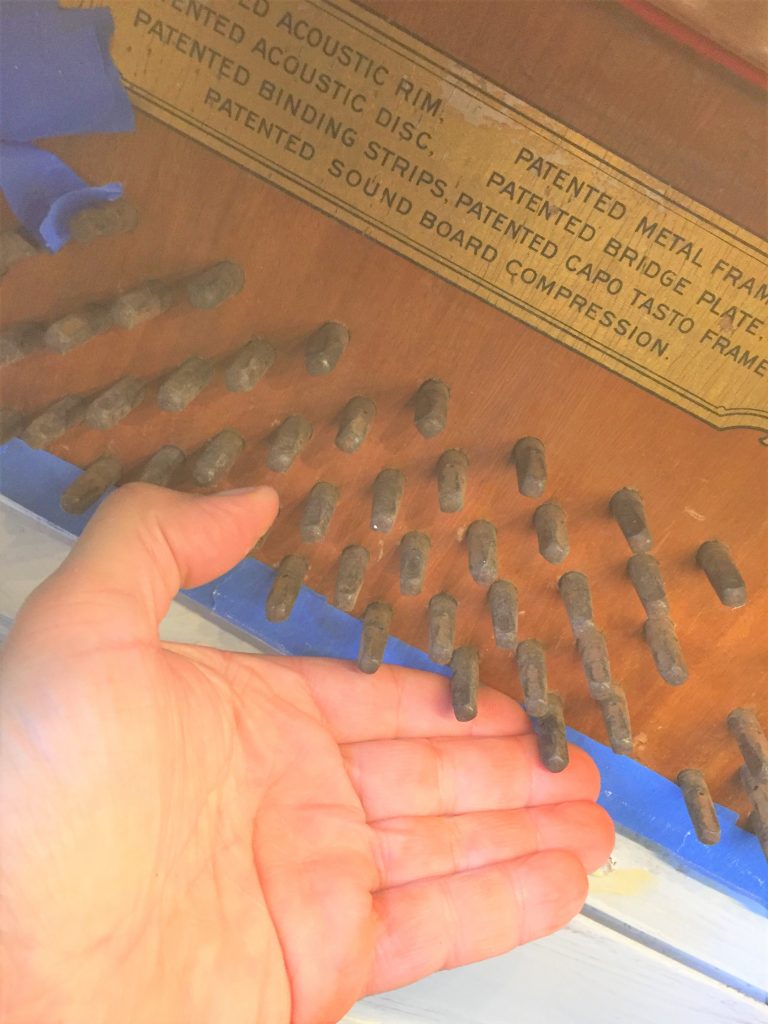
To give this internal part more functionality, wooden dowels were drilled in place so that wine glasses can be displayed there. The dowels along with the shelves and other internal elements, were painted and stained to match the warm, deep tones of the outside Mahogany finish. This helped to make the make it look cohesive and connected.
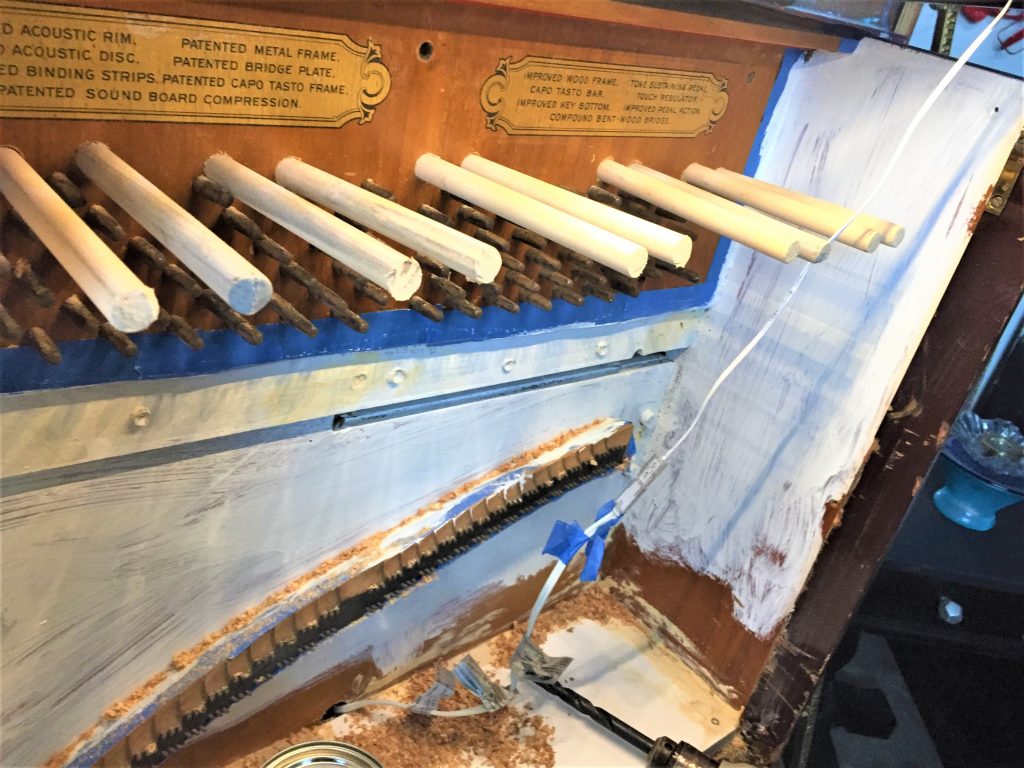
Strips of under cabinet lights were attached to the inside of the piano’s top so that when in use, it would be illuminated. This makes the glassware shimmer and adds a sparkle to the overall look of the bar.
During its repuposing, I needed to shift some pieces around to allow it to function well. When the top was closed, for example, there was now a gap along the back of the keyboard. Always one to reuse things, I took an old internal piece of the piano’s wood, already beveled and finished looking, to cover this open spot. It blended in perfectly.
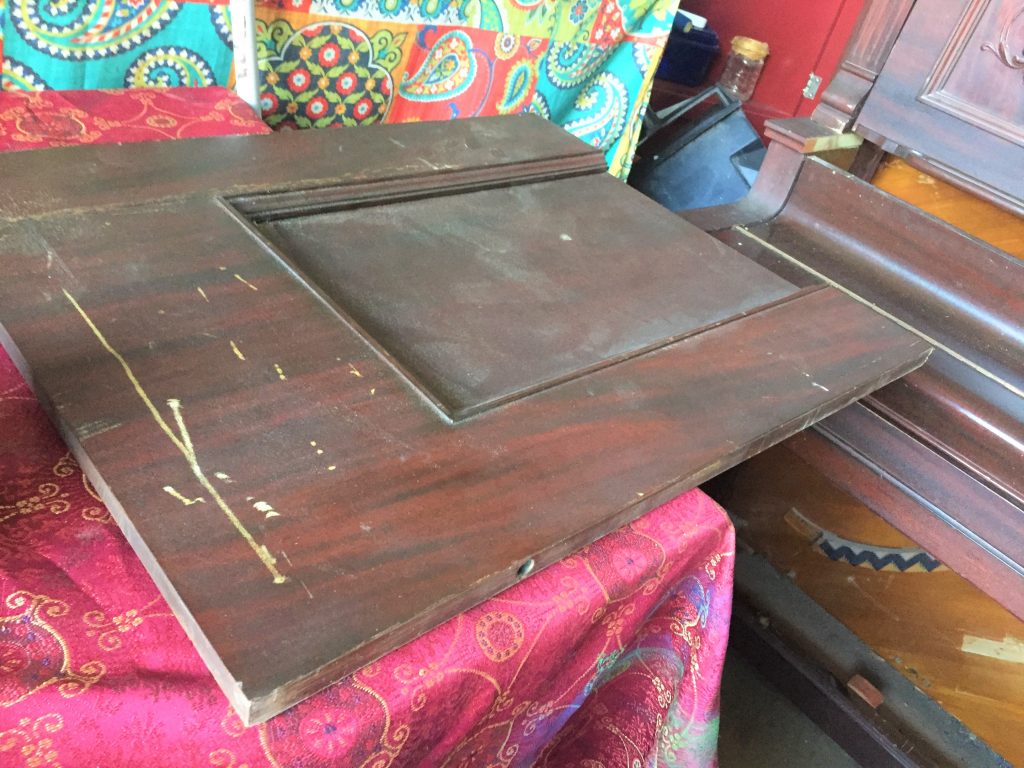
Expert Tip:
This project certainly provided lots of areas for growth. One of its challenges for me as an upcycle artist was finding solutions that both were functional and visually appealing. While my original plan was to use some pre-fab wire glass racks, they were too big and didn’t look right. Same thing with the gap between the keyboard and the top panel. My tip? When feeling frustrated or uncertain about how to proceed, step away from your project, do something else and return to it with new eyes, energy and insights. As with any project (and in life), we need to be open to shifting, being flexible and changing course!
Bottom section: simple storage
The bottom section under the keyboard was ready for its new role: a place for storage. One wooden panel covered the entire bottom section, so it was removed and cut in half to serve as the storage section/cabinet doors. Long piano hinges were used to hold the two pieces in place and allow them to easily function as doors. Wood was added for a shelf along the bottom and another slim piece, positioned vertically in the center, allowed a place for the new doors to rest against. Magnetic cabinet latches were added to keep the doors in place when closed.
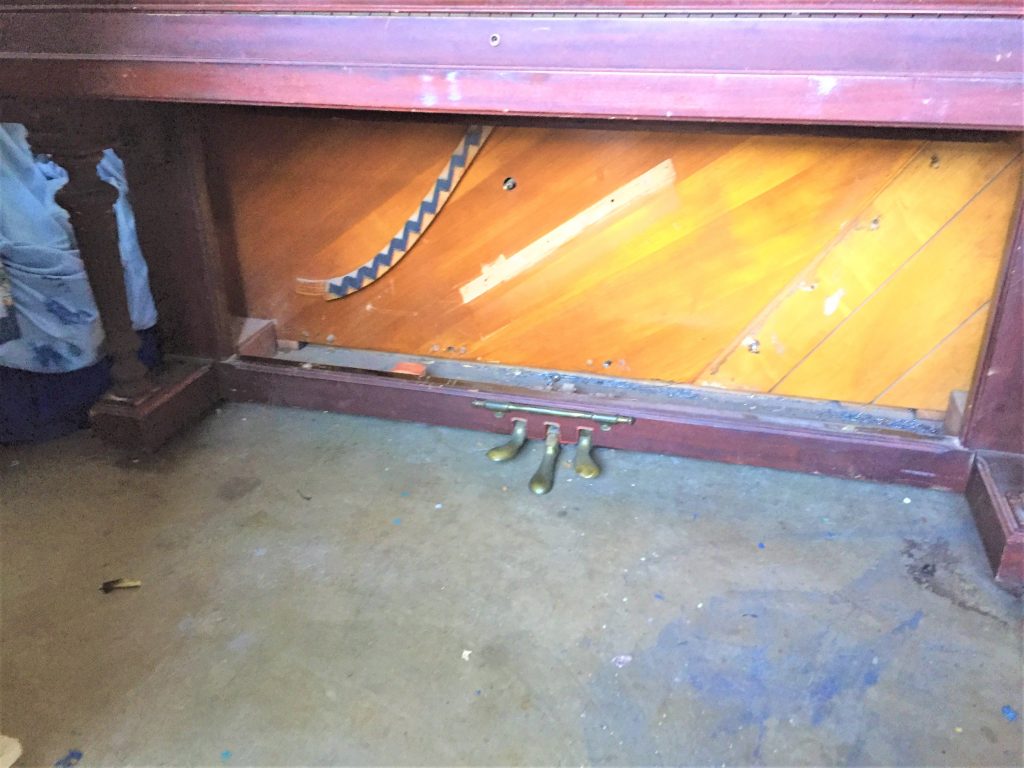
As with the upper internal part, paint and stain were used so that the previously unfinished and raw wood matched the external look. Small, elegant looking drawer pulls were added to match the piano’s original era and to allow easy access to this storage area, now perfect to hold additional bottles, glasses and other supplies.
Refresh & rejuvenate the outside
The once beautiful finish of the wood was worn, dirty and down and out after years of use. There were scratches from moving it from place to place over its lifetime. You could certainly understand why some might say that it was time to put this piece out of its misery, so to speak. I am so glad that my client, Dorothy, could see what this piano could become.
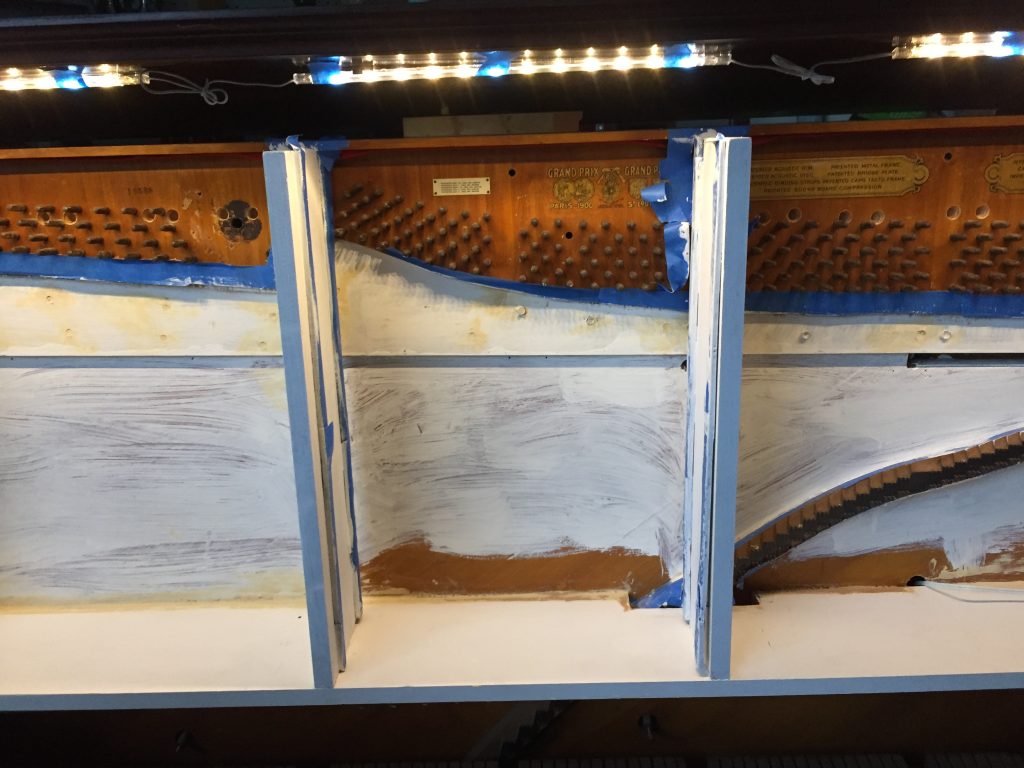
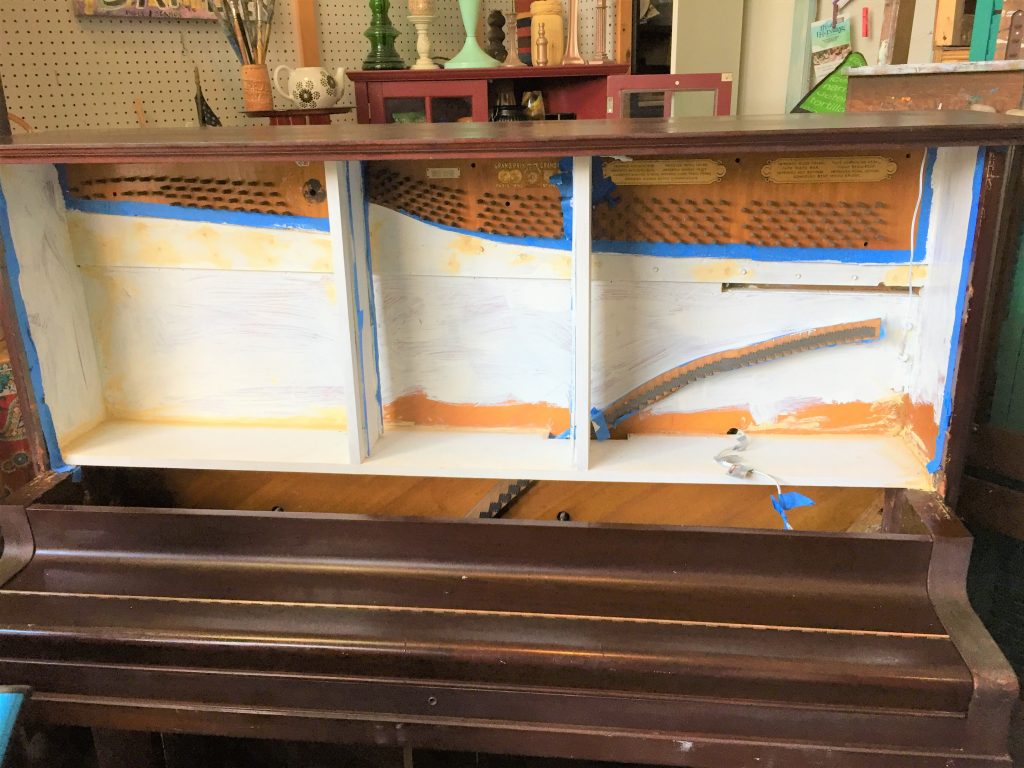
A deep Mahogany-toned stain was selected. Given its age and its condition, several layers were required. Even after the first coat, this songstress was brought back to her youthful glory days. It was so exciting to see her shine up so well, imperfections and all, and get her ready for her new incarnation.

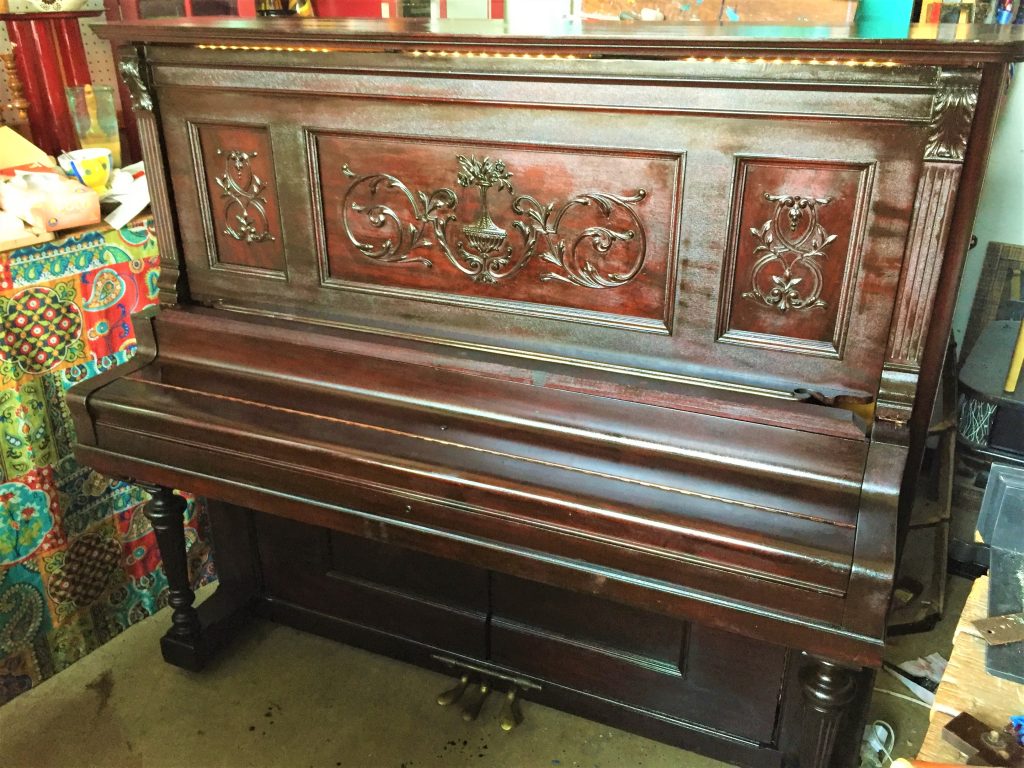
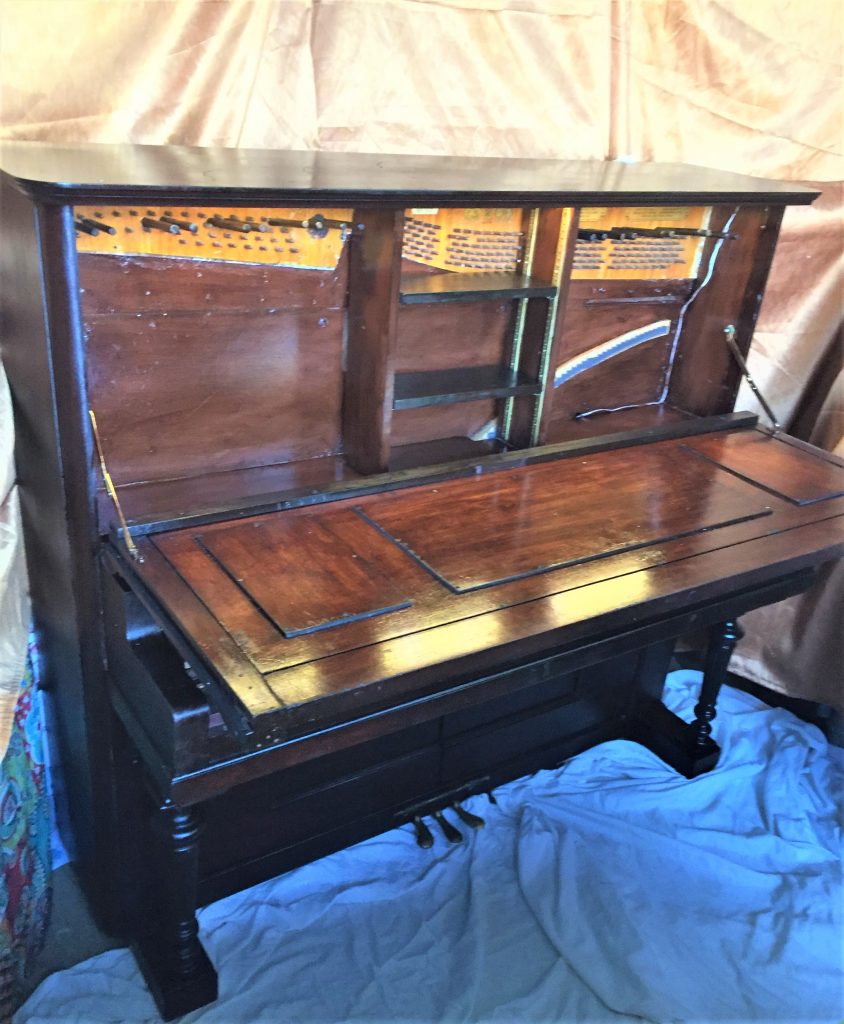

Serve up with style
My instructions to Dorothy? Pull open the top and turn on the bar lights. Hang wine glass in their new racks. Position shorter glasses on the shelves. Stash extra bottles in the storage below. Uncork some bubbly and get ready to make a toast to this totally transformed piece. Raise your glasses and click them together in honor of your grandmother and for the special gift she gave you, not just as in life, but her beloved piano!
